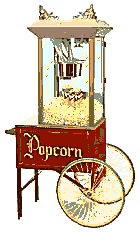'Lesson Three'

'Lesson Three'

|
|

'Let's review some of the things that were learned in the preceding lessons.'
| 'SUBJECT, THING(S)' | 'ACTION, VERB(S)' | 'OBJECT, THING(S)' | ||
|---|---|---|---|---|
| 'Adj.' | 'Noun' | 'Adj.' | 'Noun' | |
| Gud | sòn ('sing.') | ït ('present') | frï | sandwich. ('sing.') |
| --- | ---(E)S ('pl.') | ---ED ('past') | -- | ---(E)S ('pl.') |
| WIL-ït ('fut.') | ||||

'Please, recall that the plural ending -es is added to the noun if in the singular, the noun ends in anyone of these six sibilants: ch, j, s, z, sh, zh: pïch, pïches, brij, brijes, pïs, pïses, nowz, nowzes, push, pushes. In these cases the -es, being unaccented, is frequently pronounced as -ès.'
'EXAMPLES OF IMPORTANCE OF WORD ORDER':
Ov-ay (Ay's) fädhèr --- klïn --- ov-wi (wi's) haws.
' .'
Ov-hi (Hi's) sistèrs --- sïed --- ov-yü (yü's)
bròdhèrs.
' .'
'The sentences should be written in the word order seen above: subject-verb-object. This is the most frequent sequence in English, and it is much easier to learn just this one word order for basic communication.'
'It is important to remember that the syntax, in other words, the word order in a sentence, is what reveals the function of each word therein. Notice the examples that follow.'
'EXERCISES (1-2). ANSWER a) and b) of both numbers 1 and 2 in your language with reference to the two sentences.'
1) Ov-yü bròdhèr sïed ov-wi sistèrs.
a) WHO WAS THE ONE SEEING?
______________________________
b) WHO WAS SEEN? ______________________________
2) Ov-wi sistèr sïed ov-yü bròdhèrs.
a) WHO WAS THE ONE SEEING?
______________________________
b) WHO WAS SEEN? ______________________________
'The answers are different. You can see the reason why in these lessons we stick to the basic sequence of words: SUBJECT---VERB---OBJECT.'

'VÒKÁBYÙLERI (VOCABULARY) 'YOUR LANGUAGE EQUIVALENT' (1)'
klowdhs (clothes), n. ' '
hat (hat), n. ' '
kap (cap), n. ' '
pants (pants), n. pl. ' '
soks (socks), n. pl. ' '
shìrt (shirt), n. ' '
shüs (shoes), n. pl. ' '
tay (tie), n. ' '
PARTS OV BÒDI (PARTS OF BODY), ' '
arm (arm), n. ' '
ays (eyes), n. pl. ' '
biàrd (beard), n. ' '
chest (chest), n. ' '
chïk (cheek), n. ' '
chin (chin), n. ' '
elbow (elbow), n. ' '
finggèr (finger), n. ' '
fut (foot), n. ' '
glases (glasses), n. pl. ' '
hed (head), n. ' '
hand (hand), n. ' '
leg (leg), n. ' '
lips (lips), n. pl. ' '
mawth (mouth), n. ' '
nek (neck), n. ' '
neyl (nail), n. ' '
nï (knee), n. ' '
nowz (nose), n. ' '
showldèr (shoulder), n. ' '
stòmàk (stomach), n. ' '
tow (toe), n. ' '
tüth (tooth), n. ' '
ÒDHÈR WÒRDS (OTHER WORDS), ' '
àgén (again), adv. ' '
arm (arm), n. ' '
awt (out), prep. ' '
boks (box), n. ' '
bay (buy), v. ' '
bikôz (because), conj. ' '
bröd (broad), adj. ' '
dhey (they, them), pron. ' '
drayv (drive), v. ' '
dres (dress), n. ' '
fastèr (faster), adj. ' '
hùzbànd (husband), n. ' '
help (help), n. ' '
kòm (come), v. ' '
kär (car), n. ' '
klèrk (clerk), n. ' '
klowdhs (clothes), n. ' '
klowdhing (clothing), n. ' '
kost (cost), n. ' '
leg (leg), n. ' '
löng (long), adj. ' '
mùch (much), adj. ' '
mey (may), v. ' '
möl (mall), n. ' '
nïd (need), v. ' '
nyü (new), adj. ' '
park (park), n. ' '
sayz (size), n. ' '
short (short), adj. ' '
sï (see), v. ' '
stör (store), n. ' '
süt (suit), n. ' '
teyk (take), v. ' '
töl (tall), adj. ' '
veri wel (very well), fr. ' '
wayf (wife), n. ' '
wayt (white), adj. ' '
weàr (wear), v. ' '
weàr awt (wear out), v. ' '
wil-put (will put), v. ' '
wök (walk), v. ' '
wud-layk (would like), v. ' '
wumàn (woman), n. ' '
yü's (you's, your), adj. pos. '

| 'NOUNS' | 'VERBS [Infinitives]' | 'ADJECTIVES' | |
|---|---|---|---|
|
|
|||
| awùr - (hour), ' ' | weyt - (to wait for), ' ' | wayt - (white), ' ' | |
| yiàr - (year), ' ' | ask - (to ask a question), ' ' | blü - (blue), ' ' | |
| mörning - (morning), ' ' | sï - (to see), ' ' | brawn - (brown), ' ' | |
| minùt - (minute), ' ' | rikwést - (to ask for), ' ' | yelow - (yellow), ' ' | |
| nayt - (night), ' ' | drayv - (to drive), ' ' | grey - (gray), ' ' | |
| wïk - (week), ' ' | rispónd - (to answer), ' ' | blak - (black), ' ' | |
| dey - (day), ' ' | weàr - (to wear), ' ' | red - (red), ' ' | |
| ïvning - (evening), ' ' | liv - (to be alive), ' ' | grïn - (green), ' ' | |

'THE ADVERBS are like the adjectives, but instead of describing nouns, the adverbs describe verbs, adjectives or other adverbs. Normally, the adverbs answer the questions: HAW (HOW?) ` ?' WEN (WHEN?) ` ?' WER (WHERE?) ` ?' WAY (WHY) ` ?'
The adverbs normally end in -li.'
'The basic meaning of a word can be used in different ways simply by changing its ending.'
Slow = (slow), 'lenta' + -li = (slowly), ' '
Slowli = (slowly), 'lentamente'; Kär rùn slowli. ' .'
Slowli = (slowly), 'lentamente'; Shi wök slowli. ' .'
'The adverbs normally follow the word they modify. Thus: Shi wök slowli. - (She walk slowly.) ' .'

'In TE each vowel (a, e, i, o, u) is a nucleus of a syllable. Hence in TE 'slowli' has two syllables: 'slow-li'.

'REVIEW'
| 'SUBJECT = THING | VERB | ADVERB | OBJECT = THING' | ||
|---|---|---|---|---|---|
| ('ADJECTIVE) | (NOUN) | (ADJECTIVE) | (NOUN') | ||
| Wayf ('sing.') | drayv ('present') | ---LI | nyü | kär ('sing.') | |
| WayfS ('plural') | --ED ('past') | slowli | nyü | kärS ('plural') | |
| WIL-drayv ('future') | |||||
| ' .' | |||||
'EXERCISES (3-7)' 'Write the following sentences in Transitional English: The Standard English orthography is also given here as an aid to your writing.'
3. (Of-I husband will-run in evening.) ' .'
4. (Of-we clerk asked, 'What size you wear?') ' ?'
5. (I like blue suit very much.) ' .'
6. (Of-I wife drive car slowly.) ' .'
7. (Of-we clothes be old. We need new dress and suit.) ' .'

'REVIEW OF NUMBERS: Like all other adjectives, the CARDINAL (regular) numbers do not agree with the gender nor number of the nouns they modify. And like other adjectives, the numerals also normally precede the nouns they describe.'
| wòn | 1 | thrïti-wòn; thìrti-wòn | 31 | |
| tu | 2 | thrïti-tü; thìrti-tü | 32 | |
| thrï | 3 | ... | ... | |
| för | 4 | förti | 40 | |
| fayv | 5 | fayvti; fifti | 50 | |
| siks | 6 | siksti | 60 | |
| sevèn | 7 | sevènti | 70 | |
| eyt | 8 | eyti | 80 | |
| nayn | 9 | naynti | 90 | |
| ten | 10 | wòn hùndrèd | 100 | |
| wòntîn; ilévèn | 11 | wòn thawzànd | 1000 | |
| tutîn; twelv | 12 | ... | ... | |
| thrïtîn; thìrtîn | 13 | ... | ... | |
| förtîn | 14 | ... | .. | |
| fayvtîn; fiftîn | 15 | zïrow | 0 | |
| ... | ... | ... | ... | |
| tüti; twenti | 20 | wòn poynt zïrow | 1.0 | |
| tüti-wòn; twenti-wòn | 21 | zïrow poynt wòn | 0.1 | |
| ... | ... | zïrow poynt zïrow wòn | 0.01 | |
| thrïti; thìrti | 30 | etc. | ||
| wòn thawzànd nayn hùndrèd naynti-nayn (nayntîn naynti-nayn) | 1999 | |||
'Unlike many other languages that use a comma to indicate decimals, Transitional English, like Standard English, employs a point.'
'An easier and more common form of giving numbers in English is to say each number separately: 10= wòn zïrow, 11= wòn
wòn, 15= wòn fayv, 20= tü zïrow, 21= tü wòn,
32= thrï tu, etc. This form is especially used when giving address
or telephone numbers; examples a) telephone: Area code 606/ 123-4567
= arïà kowd siks zïrow siks / wòn tu thrï
- for fayv siks sevèn; b) address: 7204 Hope Avenue = sevèn
tu zïrow for Hop Avènü.'
is to say each number separately: 10= wòn zïrow, 11= wòn
wòn, 15= wòn fayv, 20= tü zïrow, 21= tü wòn,
32= thrï tu, etc. This form is especially used when giving address
or telephone numbers; examples a) telephone: Area code 606/ 123-4567
= arïà kowd siks zïrow siks / wòn tu thrï
- for fayv siks sevèn; b) address: 7204 Hope Avenue = sevèn
tu zïrow for Hop Avènü.'
'The ORDINAL NUMBERS [those which indicate sequential order] take the ending -th: wònth boys rayt, (The first boys write.) ` .''
Wònth 'or' fìrst (first), ' '; twentith (twentieth), ' '; wònthlï 'or' fìrstli (firstly*), ' '; tüth 'or' sekònd (second), ' '; sevènti-wònth 'or' sevènti-fìrst (seventy-first), ' '; tüthli 'or' sekòndli (secondly), ' '; thrïth 'or' thìrd (third), ' '; hùndrèdth (hundredth), ' '; thrïthlï 'or' thìrdli (thirdly), ' '.
* 'The numerical adverbial form is sometimes translated as follows: wònthlï = (in the first place,) ` '; tüthli = (in the second place,) ` ' etc.'

'EXERCISES (8-20).' 'Translate the following sentences into Transitional English. First we give the sentence in your language, followed by the form in Standard English orthography, as help with TE.'
8. 'Translation of sentence in learner's language goes here.' (She love he. He love she.)
9. ' .' (He love of-she sister.)
10. ' .' (He like drive car.)
11. ' .' (She love [the] sixth new dress.)
12. ' .' ([The] twoth (second) woman hate (not lòv) [the] oneth (first) man.)
13. ' .' (Husband and wife asked, onethly (firstly), for dress and suit.)
14. ' .' (Then they asked for price of clothes.)
15. ' .' (The clerk speak Transitional English to husband and wife.)
16. ' .' (The shop sell good clothes for tall woman and short man.)
17. ' .' (Sixty minutes be one hour.)
18. ' .' (Twenty-four hours be one day [and night].)
19. ' .' (Seven days be one week. [The] seventh day be Saturday.)
20. ' .' (The third day be Tuesday, the fourth day be Wednesday.)

1. a) Ov-yü bròdhèr. b) Ov-wi sistèrs.
2. a) Ov-wi sistèr. b) Ov-yü bròdhèrs.
3. Ov-ay hùzbànd wil-rùn in ïvning.
4. Ov-wi klèrk asked, 'Wàt sayz yü
weàr?'
5. Ay layk blü süt veri mùch.
6. Ov-ay wayf drayv kär slowli.
7. Ov-wi klowdhs bï old. We nïd nyü dres
and süt.
8. Shi lòv hi. Hi lòv shi.
9. Hi lòv ov-shi sistèr.
10. Hi layk drayv kär.
11. Shi lòv fayvth (fifth) nyü dres.
12. Tüth (sekònd) wumàn not lòv
wònth (fìrst) man.
13. Hùzbànd and wayf asked for dres and
süt.
14. Dhen dhey asked for prays ov klowdhs.
15. Klèrk spïk Transíshònàl
Inglish tu hùzbànd and wayf.
16. Shop sel gud klowdhs for töl wumàn and
short man.
17. Siksti minùts bï wòn awùr.
18. Tüti-för (Twenti-för) awùrs
bï wòn dey [and nayt].
19. Sevèn deys bï wòn wïk.
20. Thrïth (thìrd) boy bï ov-ay tüth
(sekònd) sòn.

VÒKÁBYÙLERI (VOCABULARY) 'YOUR LANGUAGE EQUIVALENT HERE (3)'
| ays (eyes), n. ' ' | layk (like), v. ' ' |
| beybi (baby), n. ' ' | layk (like), prep. ' ' |
| enjìníèr (engineer), n. ' ' | lòv (love), v. ' ' |
| at (at), prep. ' ' | luk (look), v. ' ' |
| fat (fat), adj. ' ' | mistèr (Mr.), n. ' ' |
| grow (grow), v. ' ' | misès (Mrs.), n. ' ' |

'EXERCISES (1-7). HERE ARE SOME SENTENCES IN TRANSITIONAL ENGLISH, WHICH SHOULD BE TRANSLATED INTO YOUR LANGUAGE. COMPARE YOUR ANSWERS TO THOSE THAT APPEAR BELOW.'
1. Misès Meri Smith hav nyü beybi. Beybi neym bï Jil Smith.
2. Beybi hav blü ays, and it ït mùch. It bï fat and luk layk Mr. Smith.
3. Ov-it mòdhèr layk luk at it. Shi lòv it veri mùch.
4. Mr. and Mrs. Smith lòv ov-dhey (dhey's) beybi.
5. Dhey howp it grow ùp and bï enjìníèr layk Mrs. Smith.

'The sentences in your language that follow should be translated into Transitional English. As an aid they are also given in Standard English orthography.'
6. ' .' (We go to mall [to] buy clothes: [a] red dress for wife, and [a] blue suit for I.)
7. ' .' (There they have beautiful clothes, that not cost much.)

'ANSWERS (1-7). {ANSWERS (1-5) ARE TO BE PROVIDED BY TRANSLATOR IN HIS/HER LANGUAGE}'
1. ' .'
2. ' .'
3. ' .'
4. ' .'
5. ' .'
'ANSWERS IN TRANSITIONAL ENGLISH'
6. Wi go tu möl tu_bay klowdhs: red dres for wayf,
and blü süt for ay.
7. Dheèr dhey hav byütifùl klowdhs,
dhat not kost mùch.
'(The imperative verb has no special form. It is the same as the infinitive, or as a verb in its present tense v.gr., ask (ask). When a command is written, we only place an exclamation point [!] at the end of the command. In speech, on the other hand, a command is indicated by earnestness and raising the tone of the voice. This is what happens in most languages.) If you do not understand something, don't hesitate to ask questions of someone who may know the answer.'

| Anìmàls (Animals) ' ' | Füds (Foods) ' ' |
|---|---|
| kat (cat), n. ' ' | bred (bread), n. ' ' |
| dog (dog), n. ' ' | bùtèr (butter), n. ' ' |
| elèfànt (elephant), n. ' ' | milk (milk), n. ' ' |
| taygèr (tiger), n. ' ' | vejètàbèls (vegetables), n. ' ' |
| layòn (lion), n. ' ' | tòmâtow (tomato), n. ' ' |
| krokòdayl (crocodile), n. ' ' | karòt (carrot), n. ' ' |
| maws (mouse), n. ' ' | mït (meat), n. ' ' |
| flay (fly), n. ' ' | chïz (cheese), n. ' ' |
| rat (rat), n. ' ' | pïz (peas), n. pl. ' ' |
| mòngki (monkey), n. ' ' | eg (egg), n. ' ' |
| hors (horse), n. ' ' | apèl (apple), n. ' ' |
| kaw (cow), n. ' ' | peàr (pear), n. ' ' |
| shïp (sheep), n. ' ' | bànánà (banana), n. ' ' |
| dongki (donkey), n. ' ' | cheri (cherry), n. ' ' |
| myül (mule), n. ' ' | beri (berry), n. ' ' |
| beris (berries), n. pl. ' ' | |
| hey (hay), n. ' ' |
'Study the sentences below and translate into your language.'
1. Wàt anìmàls bï dher in zü?
' ?'
2. In zü wi sï mòngkis, elèfànts, taygèrs, and layòns.
' .'
3. Wàt anìmàls yü hav at howm?
' ?'
4. At howm wi hav kat, dog, kaw, and hors.
' .'
5. Wàt kaynd füd anìmàls ït?
' ?'
6. Kat and dog ït mït; hors and kaw ït hey.
' .'
7. Maws layk chïz; kat layk milk.
' .'
8. Ay layk bred and bùtèr, and ov-ay frend layk vejètàbèls.
' .'
9. Dhat bï gud. Yü shud ölsow ït vejètàbèls, layk pïz, tòmâtows, and früts layk bànanàs, cheris, and beris.
' .'
10. Shïps, mòngkis, and myüls not layk layòns.
' .'
| Click here for the Transitional English to Standard English and 'Your language' vocabulary. ('Translate the preceding sentence into your language'.) | Click here for the Standard English to Transitional English and 'Your language' vocabulary. ('Translate the preceding sentence into your language.') | Click here for 'Your language' to Transitional English and Standard English vocabulary. ('Translate the preceding sentence into your language'.) |
|---|---|---|
| Click here for Langenscheidt's 'Your language'-English English-'Your language' on-line dictionary. ('Translate the preceding sentence into your language.') | ||
